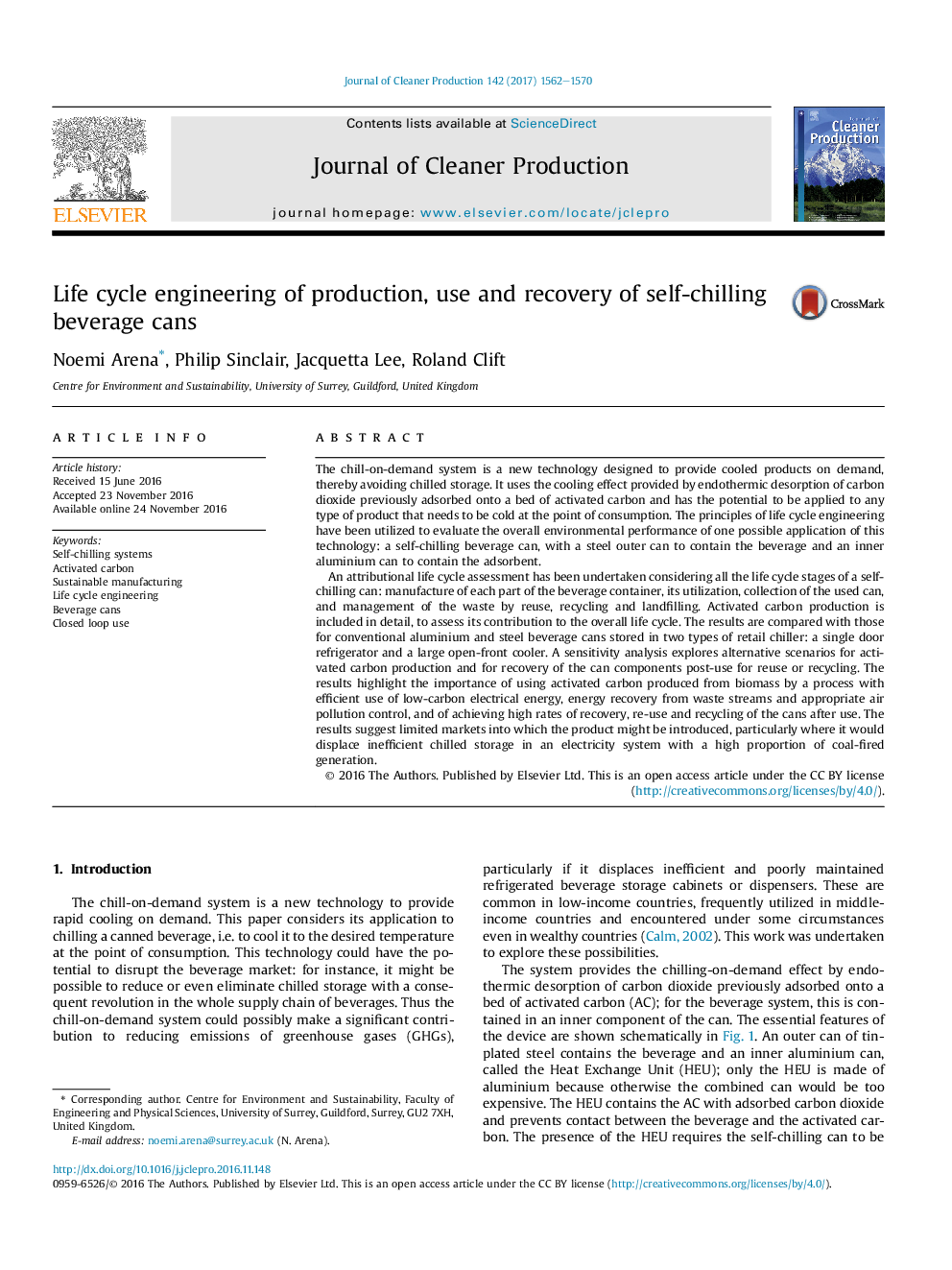| کد مقاله | کد نشریه | سال انتشار | مقاله انگلیسی | نسخه تمام متن |
|---|---|---|---|---|
| 5480333 | 1399315 | 2017 | 9 صفحه PDF | دانلود رایگان |
عنوان انگلیسی مقاله ISI
Life cycle engineering of production, use and recovery of self-chilling beverage cans
ترجمه فارسی عنوان
مهندسی چرخه عمر تولید، استفاده و بازیابی قوطی های نوشیدنی خود چسبیده
دانلود مقاله + سفارش ترجمه
دانلود مقاله ISI انگلیسی
رایگان برای ایرانیان
کلمات کلیدی
سیستم خنک کننده، کربن فعال، تولید پایدار، مهندسی چرخه زندگی قوطی نوشیدنی، استفاده از حلقه بسته
ترجمه چکیده
ارزیابی چرخه عمر وابسته با در نظر گرفتن تمام مراحل چرخه زندگی خود می تواند انجام شود: تولید هر بخشی از مخزن نوشیدنی، استفاده از آن، جمع آوری می تواند استفاده شود و مدیریت ضایعات با استفاده مجدد، بازیافت و دفع زباله . تولید کربن فعال در جزئیات گنجانده شده است، برای ارزیابی سهم خود در چرخه عمر کلی. نتایج با مقادیری که برای مخازن معمولی آلومینیوم و نوشیدنی فولاد ذخیره می شود در دو نوع چیلر خرده فروشی ذخیره می شود: یخچال و فریزر درب و یک کولر بزرگ جلو باز. تجزیه و تحلیل حساسیت به بررسی سناریوهای جایگزین برای تولید کربن فعال و برای بازیابی اجزای کامپوزیت پس از استفاده برای استفاده مجدد یا بازیافت می پردازد. نتایج نشان می دهد اهمیت استفاده از کربن فعال تولید شده از زیست توده در فرآیند با استفاده کارآمد از انرژی الکتریکی کم انرژی، بازسازی انرژی از جریان های پساب و کنترل آلودگی هوا و دستیابی به میزان بالای بهبودی، استفاده مجدد و بازیافت قوطی ها بعد از استفاده. نتایج نشان می دهد که بازار های محدودی که ممکن است محصول را معرفی کنند، به ویژه در مواردی که ذخیره سازی نامناسب سرد در سیستم برق با درصد بالایی از تولید ناخالص زغال سنگ جایگزین شود.
موضوعات مرتبط
مهندسی و علوم پایه
مهندسی انرژی
انرژی های تجدید پذیر، توسعه پایدار و محیط زیست
چکیده انگلیسی
An attributional life cycle assessment has been undertaken considering all the life cycle stages of a self-chilling can: manufacture of each part of the beverage container, its utilization, collection of the used can, and management of the waste by reuse, recycling and landfilling. Activated carbon production is included in detail, to assess its contribution to the overall life cycle. The results are compared with those for conventional aluminium and steel beverage cans stored in two types of retail chiller: a single door refrigerator and a large open-front cooler. A sensitivity analysis explores alternative scenarios for activated carbon production and for recovery of the can components post-use for reuse or recycling. The results highlight the importance of using activated carbon produced from biomass by a process with efficient use of low-carbon electrical energy, energy recovery from waste streams and appropriate air pollution control, and of achieving high rates of recovery, re-use and recycling of the cans after use. The results suggest limited markets into which the product might be introduced, particularly where it would displace inefficient chilled storage in an electricity system with a high proportion of coal-fired generation.
ناشر
Database: Elsevier - ScienceDirect (ساینس دایرکت)
Journal: Journal of Cleaner Production - Volume 142, Part 4, 20 January 2017, Pages 1562-1570
Journal: Journal of Cleaner Production - Volume 142, Part 4, 20 January 2017, Pages 1562-1570
نویسندگان
Noemi Arena, Philip Sinclair, Jacquetta Lee, Roland Clift,
